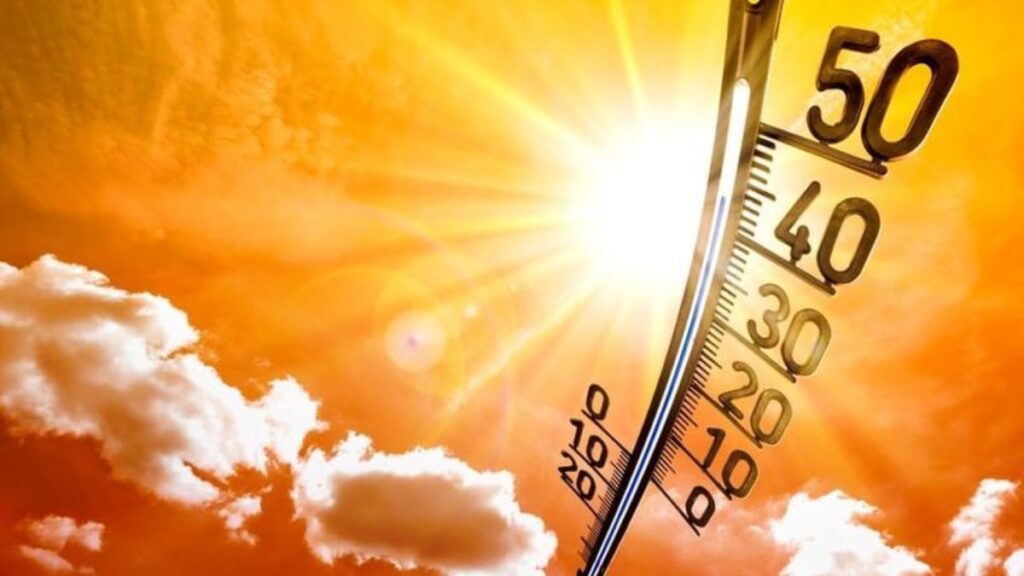
In the vast expanse of the United States, the weather is a dynamic force, capable of delivering a wide range of conditions that can vary from one extreme to another. This week, the nation finds itself caught in a tumultuous battle between opposing weather phenomena, with hot and cold extremes gripping different regions. From scorching heatwaves to late-season snowstorms, and from torrential rains to unseasonable cold snaps, the weather is putting residents on alert from coast to coast.
Search
Recent Posts:
- OpenAI Brings ChatGPT to be used in WhatsApp: Here’s How It Works and What You Can Do To Use It.
- Realme 14x 5G: A Budget Smartphone With Premium Features.
- Exploring Apple Genmoji: A New Era of Custom Emoji Creation.
- 2024 United States Presidential Election: Donald Trump Declares Victory in 2024 Presidential Election
- Chancellor Olaf Scholz’s Visit to India: Advancing Indo-German Cooperation on Defense, Trade, and Regional Stability.
The Eastward March of a Heat wave
As the week unfolds, an ominous heat wave is making its way across the United States, triggering warnings from officials urging residents to take precautions. Originating in the Southwest, the heat wave has its sights set on the East Coast, leaving a trail of scorching temperatures in its wake. Arizona, New Mexico, and parts of Texas, Colorado, and Kansas are currently in the grip of extreme heat, with temperatures soaring to unprecedented levels. This surge in temperatures has prompted the National Weather Service to issue heat advisories covering more than 63 million people, from the sun-baked deserts of the Southwest to the bustling streets of Chicago.
The Perilous Heat in Phoenix
Nowhere is the danger of this heat wave more palpable than in the city of Phoenix, Arizona. Known for its blistering summers, Phoenix is no stranger to extreme heat, but recent years have seen temperatures soar to alarming levels. In 2023, a record 645 people lost their lives to heat-related causes in the metro Phoenix area, underscoring the deadly consequences of prolonged exposure to high temperatures. With mercury levels topping 44.4°C on Saturday, residents were left reeling from the oppressive heat, seeking refuge wherever they could find it. While Sunday brought a slight reprieve, with temperatures dipping marginally to 43.3°C, the threat of heat-related illnesses and fatalities loomed large.
The Rising Toll of Heat waves
Across the United States, heat waves have become increasingly common, posing a significant threat to public health and safety. Last year witnessed the highest number of heat waves since the Dust Bowl era of the 1930s, with abnormally hot weather persisting for more than two consecutive days in many parts of the country. As global temperatures continue to rise due to climate change, the frequency and intensity of heat waves are expected to increase, placing greater strain on communities already grappling with the impacts of extreme weather.
A Cold Snap in the Pacific Northwest
While the Southwest swelters under the oppressive heat, a different story is unfolding in the Pacific Northwest. Unseasonably cold temperatures have descended upon the region, catching residents off guard as they brace for the unexpected chill. From Seattle to Portland, and across the rugged landscapes of Oregon and Washington, people are bundling up against the biting cold, a stark contrast to the stifling heat blanketing other parts of the country. The Pacific Northwest is experiencing a weather anomaly that defies the typical patterns of late spring.
Snowfall in the Northern Rockies
As if to emphasize the unpredictability of the weather, late-season snowfall is forecast for the northern Rockies, adding another layer of complexity to the atmospheric drama unfolding across the United States. From Montana to Idaho, winter is making a comeback, with snowstorms expected to blanket the mountainous terrain in a fresh coat of white. Winter storm warnings have been issued for parts of Montana and north-central Idaho, where as much as 6 inches of heavy, wet snow is forecast to accumulate. In the higher elevations around Glacier National Park, snowfall totals could reach a staggering 20 inches, transforming the landscape into a winter wonderland in the midst of June.
The Threat of Flooding Along the Gulf Coast
As if the heat and cold weren’t enough to contend with, residents along the Gulf Coast are bracing for another round of heavy rains and flooding. A fresh batch of tropical moisture is poised to unleash torrential downpours, raising concerns about flash flooding in low-lying areas. From Louisiana to Florida, communities are preparing for the deluge, stockpiling sandbags and fortifying levees in anticipation of rising waters. With memories of past hurricanes and tropical storms still fresh in their minds, Gulf Coast residents are taking no chances as they hunker down and ride out the latest bout of inclement weather.
Adapting to Extreme Conditions in the United States
In the ever-changing landscape of the United States, the weather remains an unpredictable force, capable of delivering a wide range of conditions that can impact millions of people. From blistering heatwaves to bone-chilling cold snaps, and from heavy rains to late-season snowstorms, the nation is experiencing a rollercoaster ride of meteorological extremes. As communities adapt and respond to the challenges posed by Mother Nature, one thing is clear: resilience and preparedness are essential in the face of an uncertain future shaped by the forces of climate change.
To read more topics, please visit: https://insightfulbharat.com






